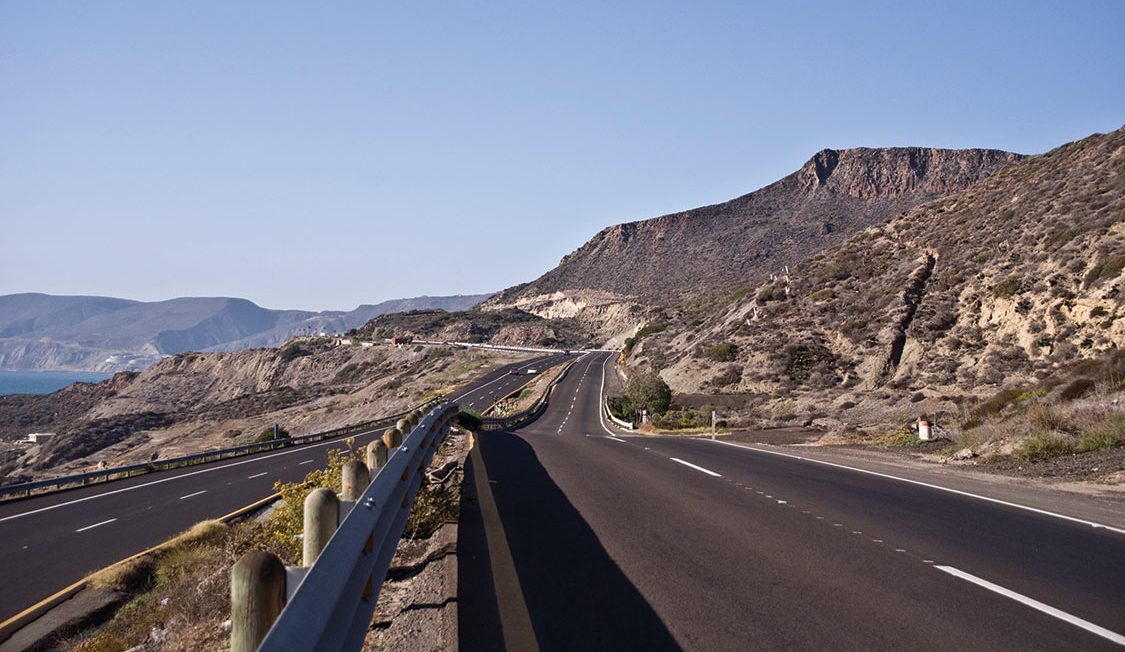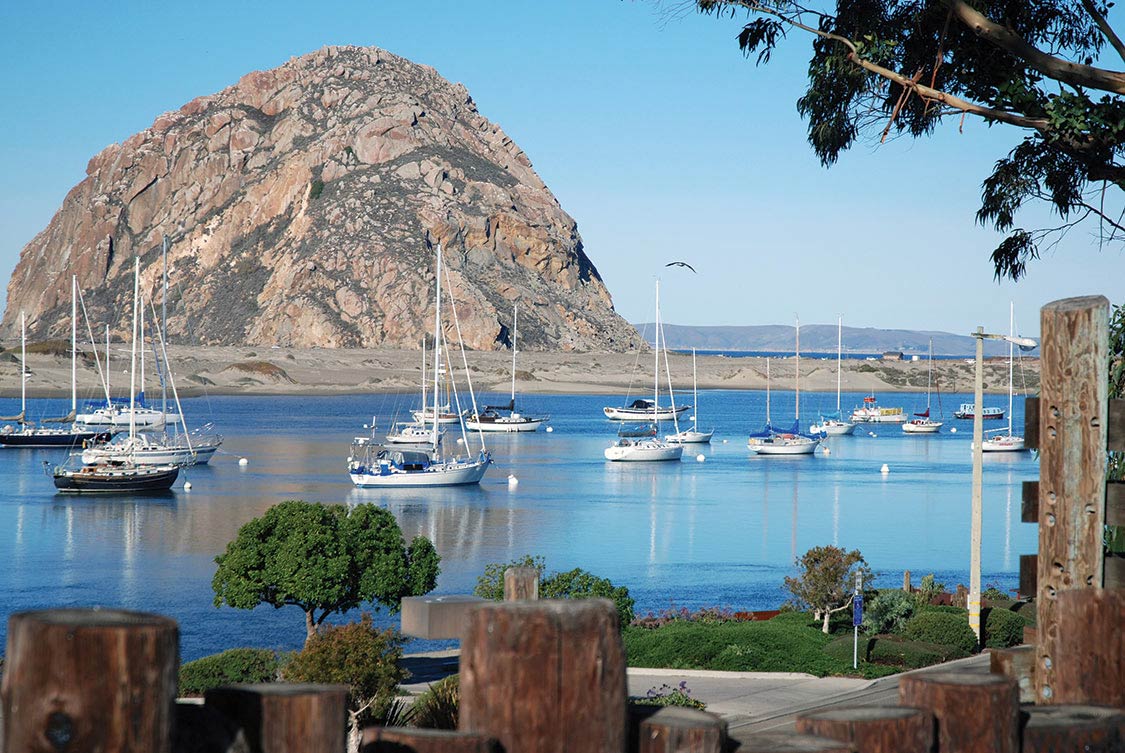 SCOTT FISHER
.
June 07, 2022
.
All Feature Vehicles
SCOTT FISHER
.
June 07, 2022
.
All Feature Vehicles

You don’t need a reason to drive the Pacific Coast Highway from Los Angeles to Monterey, California, any more than you need a reason to fall in love, or to smile when you’re hungry and you know dinner’s waiting, or any of a thousand other self-evident miracles. The Pacific Coast Highway—simply PCH to its friends—is a moveable feast. It’s waiting for you to come and enjoy.

That’s true for car guys and gals like us, who live for the experience of the seat pushing you in the back as you throttle out of a corner and feel the rush of pavement as you close in on the next one. PCH is a long, seemingly limitless first-person roller coaster game with the best controls ever: a steering wheel, shifter, brake and gas pedal. For people such as us, getting there is a lot more than half the fun.
But what about the other half—literally and figuratively? A scenic road trip with a romantic partner is a joy of its own: gorgeous scenery, breathtaking vistas, beautiful spots with great meals, and the promise of relaxation and together time. It’s great to blend in activities that don’t involve late braking, blip-throttle downshifts and powering through the turns. And PCH has some of the best scenery, vistas, meals and relaxation in the world.
After years of making the trip in both directions, I’ve come to the conclusion that the best-of-the-best version of this trip begins in Los Angeles and heads north to Monterey, 300-plus miles (depending on where you start) that follow the California coast along the shore of the Pacific Ocean.

A few numbers you need to remember: to go north from L.A., you need to head west on the Ventura Freeway, also called the 134 (and yes, if you want to be treated as a local, call it “the 134” or “the 5” or “the 101.” It’s as much a part of Los Angeles culture as silicone and Botox). At the west end of the San Fernando Valley, the 134 turns into the 101. You’ll stay there for the first couple of hours, following the coast.
If you hit the road by mid-morning, you’ll probably be ready for lunch about the time you reach Santa Barbara, one of the prettiest towns on the way—plan on Stearns Wharf for lunch. Stearns Wharf is a pier that juts out into the Pacific, with 360-degree views to the blue ocean on one side and the pink stone outcroppings in the mountains on the other. We’re fond of the Moby Dick Restaurant (220 Stearns Wharf, Santa Barbara); if you can’t decide what to get, their shrimp, scallops and chips ($18.95) lets you sample a little of everything in a delightfully crispy bread-crumb coating. Or if you’re saving up to pay for the exotic or classic you’ve rented (see “If You Can’t Bring Your Own Car”), they have a selection of sandwiches in the $10 range.
“If you are fortunate enough to have driven the Pacific Coast Highway as a young man, then wherever you go for the rest of your life it stays with you, for the Pacific Coast Highway is a movEable feast.” —with apologies to Ernest Hemingway
After lunch, it’s back onto the 101 to San Luis Obispo, where you’ll leave 101 for the real thing: Highway 1, the Pacific Coast Highway. The map says it’s 136 miles from San Luis Obispo to Monterey and estimates three and a half hours for the trip. However, that’s for a straight-through drive, and while it’s a great way to enjoy your car on this unforgettable journey, there are a few things you shouldn’t miss.
The crown jewel of PCH is Hearst Castle, the 165-room, 127-acre “pleasure dome” built by media mogul William Randolph Hearst between 1919 and 1947. Hearst Castle houses the cream of Hearst’s collection, containing art and sometimes entire rooms from Europe that Hearst bought during the Depression and installed in his palace. Movie buffs will enjoy the tram ride up from the highway, recalling the haunting opening scenes of Orson Welles’ “Citizen Kane,” a thinly veiled exposé of Hearst’s controversial life. The castle is located in San Simeon, about 40 miles north of San Luis Obispo. Cambria, an artist’s colony just off PCH near San Simeon, offers lodging at a wide range of prices.
Nature lovers should not miss Julia Pfeiffer Burns State Park, about 40 miles south of the Monterey area. If you’re up for camping, this is the place: stunning views, unbelievable scenery, with waterfalls and turquoise tide pools at the shore, and sycamore and redwood forests higher up. Make reservations (up to seven months in advance) by contacting them through the website (http://www.parks.ca.gov/?page_id=578) or by phoning (800) 444-7275.

Monterey is bound by a gorgeous bay on one side and tree-covered mountains on the other. The top restaurant in town is The Sardine Factory (701 Wave Street, Monterey, CA 93940), named after Monterey’s heyday in the early 20th century as an important fishing center. Today, the Sardine Factory boasts one of the top wine lists in the U.S., with 1800 wines and 32,000 bottles, and offers live music in the bar most nights. Dinner prices start with pasta dishes in the mid-$20s; I splurged on the Lamb Chops Dijonnaise ($42 for a 14-ounce serving), a beautifully seared rack of lamb on a reduction of red wine and lamb drippings, crusted lightly with a whole-grain Dijon mustard topping. If you’re looking for seaside dining at lower prices, the Fish Hopper (700 Cannery Row) overlooks a particularly spectacular section of Monterey Bay. Their sand dabs ($19.95) are a California specialty, with a texture and flavor similar to Dover sole but slightly sweeter, and most entrees are in the $18–$26 range.

But you’re here for the cars. Find your way to Highway 68 and head north toward Salinas. About halfway there, on your left, you’ll see the entrance to Mazda Raceway Laguna Seca, one of North America’s most famous racetracks. Check their calendar (http://www.mazdaraceway.com/calendar) and you can time your trip to catch events including motorcycle races, Sports Car Club of America championships, or the Continental Tire Monterey Grand Prix Powered by Mazda. Using the same TUDOR United SportsCar Championship cars that contest the 24 Hours of Daytona and the Brickyard Grand Prix, this is a chance to see fast cars and famous drivers in close competition. Classic and historic cars your thing? The Monterey Reunion in early August is a bucket-list event, with race cars ranging from spindly 1920s runabouts to the ground-pounding Trans-Am and Can-Am cars of the 1960s. If Monterey provides the feast, then Laguna Seca rules the movable part. And if you’re the outdoor type, check http://www.mazdaraceway.com/camping and reserve a campsite right at the track. There is nothing in the world quite as thrilling as waking up to the sound of an aluminum big-block being warmed up for race practice. You’ll never forget it.
There’s a growing trend to rent exotic, classic and performance cars—for those who have the means. We looked into some popular dream rides available in the L.A. area, and came up with a few ideas. If you can’t get your own faithful steed out to the coast for a week, here’s a way to experience the bliss that is the Pacific Coast Highway for about the daily cost of a good hotel. If you camp along the way, this almost makes economic sense…and if you figure you’re asleep in your hotel, it makes total sense to spend the money on your wheels.
Beverly Hills Rent-A-Car has a wide selection of convertibles and performance cars available. Prices and selections at press time include a Camaro SS convertible starting at $169/day, a Mustang GT at $179, and many other European luxury/sports cars (up to and including Ferraris and Lamborghinis, if you’re willing and able to drop $700-plus for 24 hours of motoring bliss).
Perhaps you’re interested in a classic? They also list a 1971 Dodge Challenger (making up for the lack of a Mopar offering in the modern fleet) starting at $489; we didn’t verify the selection, but the photo on their website showed a Plum Crazy convertible. Interestingly enough, the classic Corvette options came in at or under the Challenger, with your choice of a 1971 Corvette convertible with a 350 and 4-speed starting at $399 and a 1964 Stingray starting at $489. Blue Oval fans have their choice of a 1967 Mustang convertible starting at $549 or a 1973 Mustang convertible for $349; both of the Dearborn ponies have automatics, as does the Dodge, if that influences your selection.—Scott Fisher
We use cookies to enhance your browsing experience, serve personalized ads or content, and analyze our traffic. By clicking "Accept All", you consent to our use of cookies. Visit our Cookie Policy for more info.
Notifications
Share Link